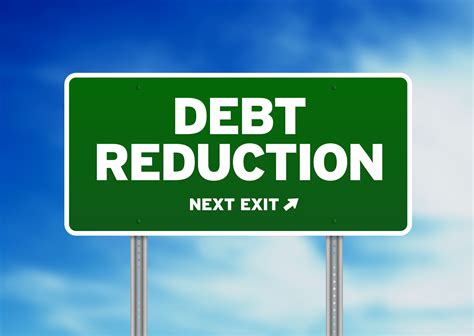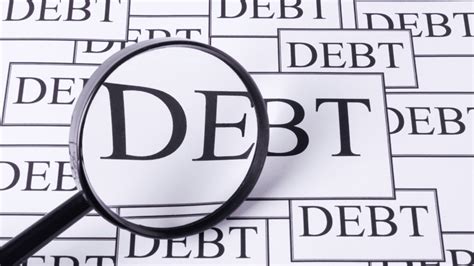
Debt reduction is something that can be beneficial for a wide range of people, especially those who are struggling to manage their debt or are looking to improve their financial situation. Here are some examples of people who may benefit from debt reduction:
- Individuals with high-interest debt: High-interest debt, such as credit card debt or payday loans, can quickly become unmanageable due to the high interest rates charged. Those who have accumulated significant amounts of high-interest debt should consider debt reduction to avoid long-term financial damage.
- People with a low credit score: A low credit score can make it difficult to obtain loans and credit at affordable rates. Debt reduction can help improve credit scores, making it easier to obtain credit in the future.
- Individuals who are living paycheck to paycheck: If you find that you are struggling to make ends meet each month, reducing your debt can help free up cash flow and provide more financial stability.
- Small business owners: Small business owners may accumulate significant debt as they grow their business. Reducing debt can help improve cash flow and free up funds for further investment in the business.
- Anyone looking to improve their financial situation: Debt reduction is a good idea for anyone looking to improve their overall financial situation. By reducing debt, you can reduce financial stress and free up funds for other important financial goals, such as saving for retirement or investing in the stock market.
Pros of Debt Reduction:
- Less Financial Stress: Reducing debt can significantly lower financial stress, allowing individuals to focus on other important areas of their life, such as saving for the future or pursuing a career.
- More Disposable Income: As debt is paid off, individuals will have more disposable income available to them each month. This can be used to pay down additional debt, invest in their future, or enjoy leisure activities.
- Improved Credit Score: Successfully reducing debt can improve an individual’s credit score, making it easier to obtain loans and credit in the future at lower interest rates.
- Greater Financial Freedom: Being debt-free allows for greater financial freedom and flexibility, allowing individuals to make choices about how they want to spend their money and build their wealth.
Cons of Debt Reduction:
- Opportunity Cost: The money used to pay off debt could have been used for other investments or purchases, such as a down payment on a house or investments in stocks or real estate.
- Reduced Cash Flow: Paying off debt requires a significant amount of cash flow, which may limit an individual’s ability to make other purchases or investments.
- Short-Term Sacrifices: In order to pay off debt, individuals may need to make short-term sacrifices, such as cutting back on expenses or delaying purchases.
- Difficulty in Obtaining Credit: While reducing debt can improve a credit score, it can also make it more difficult to obtain credit in the future as lenders may see an individual as having less need for credit.
The benefits of debt reduction generally outweigh the drawbacks. The increased financial freedom and reduced stress that comes with being debt-free can be significant, and while there may be short-term sacrifices, the long-term benefits are usually worth it.

Setting up a debt reduction plan involves a few key steps:
- Evaluate your debt: The first step in setting up a debt reduction plan is to evaluate your current debt situation. Make a list of all your debts, including the amount owed, the interest rate, and the minimum monthly payment required.
- Determine your budget: Next, determine your monthly budget by subtracting all of your necessary expenses, such as rent or mortgage, utilities, and food, from your monthly income. This will give you a clear idea of how much money you have available to put toward debt repayment each month.
- Prioritize your debts: Once you have a clear understanding of your debts and your budget, prioritize your debts based on the interest rate, with the highest interest debts being the highest priority for repayment.
- Choose a debt repayment strategy: There are several debt repayment strategies to choose from, including the debt snowball method, which involves paying off the smallest debts first, or the debt avalanche method, which involves paying off the highest interest debts first. Choose a strategy that works best for your situation.
- Set goals: Set specific, achievable goals for your debt reduction plan, such as paying off a certain amount of debt each month or paying off a specific debt by a certain date.
- Track your progress: Finally, track your progress regularly to stay motivated and on track. Make adjustments to your plan as needed if you encounter unexpected expenses or changes in your income.
Remember, debt reduction takes time and dedication, but with a solid plan in place, it is possible to become debt-free and achieve greater financial freedom.
There are several resources available to help you set up a debt reduction plan:
- Credit Counseling Agencies: Non-profit credit counseling agencies can provide free or low-cost debt counseling services and help you develop a debt reduction plan.
- Financial Advisors: Financial advisors can provide personalized advice on debt reduction and help you create a plan tailored to your specific financial situation.
- Online Resources: There are several online resources available to help you set up a debt reduction plan, including debt repayment calculators, budgeting apps, and online courses on personal finance and debt reduction.
- Debt Reduction Programs: Some organizations offer debt reduction programs that can help you negotiate with creditors, consolidate your debts, and develop a plan for repayment.
- Support Groups: Joining a support group or online community focused on debt reduction can provide motivation, support, and advice as you work toward your goals.
Remember, it’s important to choose a resource that is reputable and trustworthy. Do your research, read reviews, and seek recommendations from friends or family members to find a resource that works best for you.
